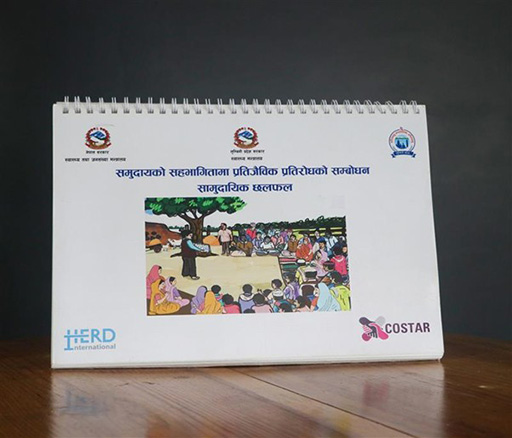9.2 The importance of community engagement in intervention design
As you have seen, AMR surveillance prioritises specific forms of quantitative data, often collected at tertiary health facilities, over qualitative community-level data and perspectives.
Recognising the significance of gender and other intersectional inequities in shaping differential behaviours and outcomes related to AMR, community engagement can serve as a key approach to address the social drivers. It follows the principle of equitable partnership fostering collaboration with communities to co-design interventions or solutions that are contextually relevant, inclusive and just.
Community engagement approaches to research (e.g. participatory video-making and community dialogue approaches [CDA]) centre community voices – particularly those of marginalised and underrepresented groups – to inform decision-making. CDA was applied by HERD International in Nepal as part of the COSTAR project to address the social drivers of AMR and associated behaviours at the community level, with a focus on gender, power relations and other equity indicators. CDA is a community-driven approach that aims to empower communities to identify and implement sustainable and contextual solutions for health. This informed the creation of flipbooks designed to share context-relevant understandings of AMR and recommended use of antibiotics. They were tailored to age, literacy and sociocultural norms. Pictures were created with community input and designed to be inclusive of gender identities. Facilitators from local communities conducted CDA discussions in rural settings, in which community participants discussed their issues, explored challenges, identified solutions and planned action that is relevant to their individual and societal context.



Next you will explore how these equity issues can be addressed in country AMR national action plans (NAPs).
9.1 Incorporating gender considerations into AMR research and interventions




